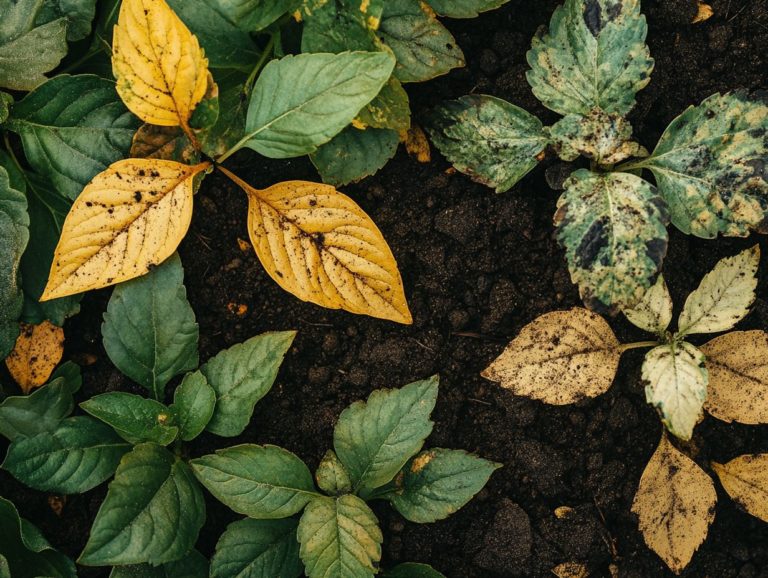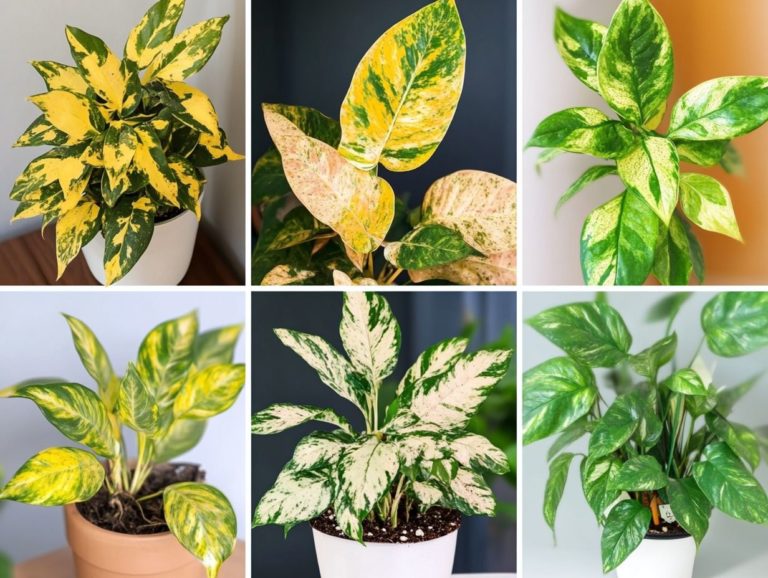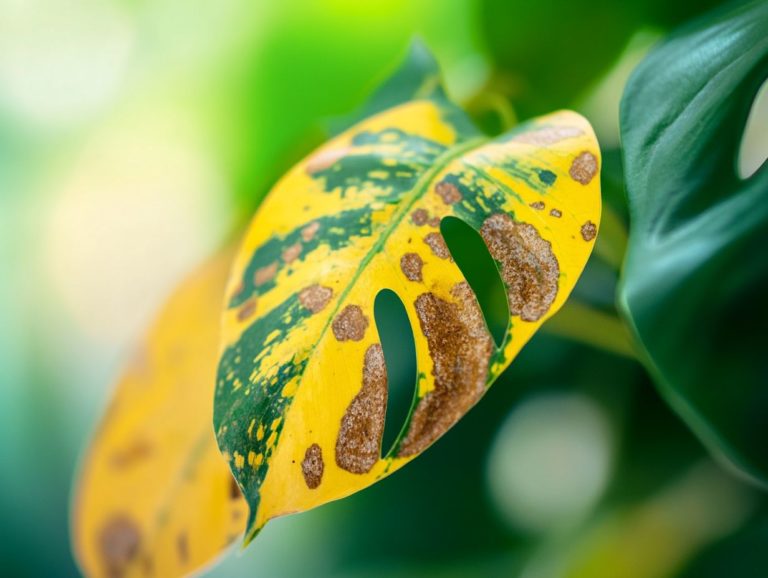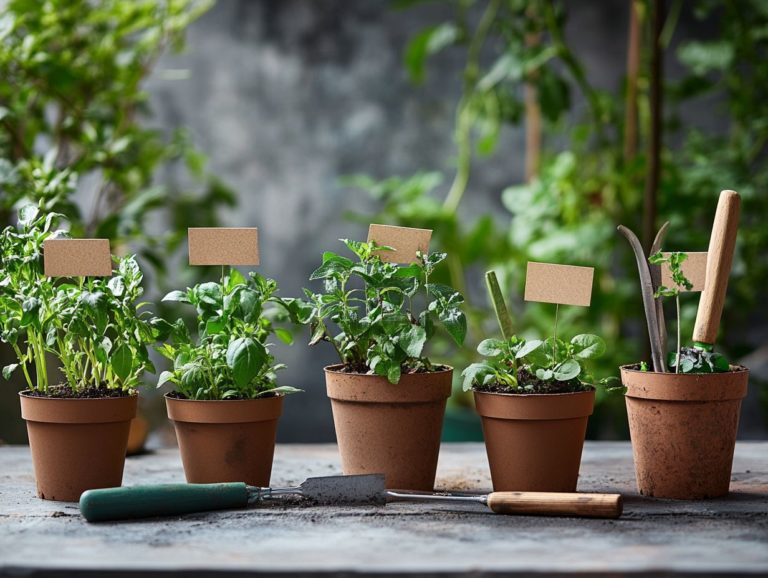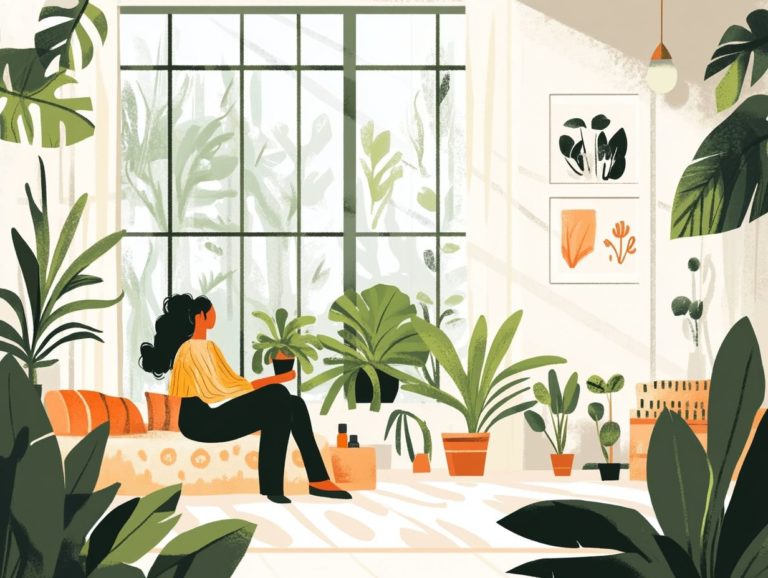Indoor Plant Care: Troubleshooting Common Issues
Bringing indoor plants into your home elevates aesthetics, enhances air quality, and boosts your mood.
However, managing these green companions can be challenging. From watering mishaps to pesky pests, understanding common issues significantly impacts your ability to keep your plants thriving.
This guide helps you identify and troubleshoot problems related to watering, pests, light, temperature, and nutrient deficiencies.
With the right knowledge, you can transform your indoor garden into a flourishing oasis.
Contents
- Key Takeaways:
- Common Issues with Indoor Plants
- Watering and Drainage Problems
- Pest Infestations
- Light and Temperature Issues
- Nutrient Deficiencies
- Frequently Asked Questions
- What are some common issues that indoor plants face?
- How can I tell if my indoor plant is being affected by pests?
- Why are the leaves on my indoor plant turning yellow?
- How can I improve the lighting for my indoor plants?
- What should I do if my indoor plant is wilting?
- How often should I fertilize my indoor plants?
Key Takeaways:
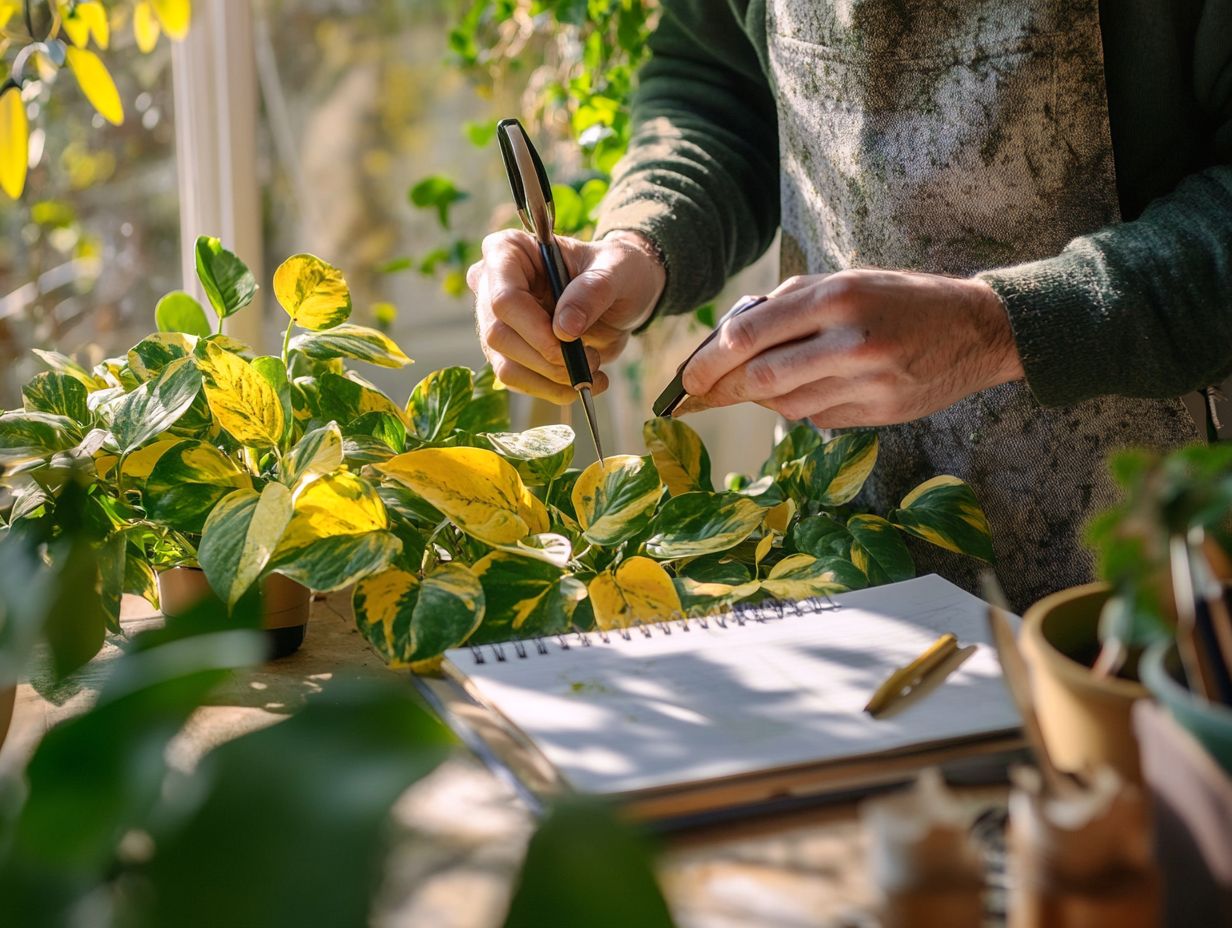
- Pay attention to watering and drainage to avoid issues with indoor plants.
- Identify and treat pests to keep your indoor plants healthy.
- Finding the right balance of light, temperature, and nutrients is crucial for indoor plant care.
Benefits of Having Indoor Plants
Indoor plants, or houseplants, provide benefits that enhance both your living space and your well-being. They purify the air by filtering out toxins and can lift your spirits with their vibrant presence.
Engaging in indoor gardening serves as a wonderful stress-reliever, providing a sense of accomplishment and a deeper connection to nature.
Incorporating greenery into your living spaces cleanses the air and fosters a serene atmosphere, significantly reducing stress levels. Caring for houseplants evokes a calming effect, making it easier for you to unwind after a long day. These plants also alleviate respiratory issues by increasing moisture in the air, promoting your overall health.
Nurturing these living organisms cultivates mindfulness, enhancing your emotional resilience while transforming any room into a sanctuary of tranquility.
Common Issues with Indoor Plants
Indoor plants can face a variety of common issues that may hurt their health and look. Symptoms like yellowing leaves, leaf drop, distorted growth, and pest infestations are clear signals that your houseplants need attention.
Identifying and Diagnosing Problems
Identifying problems in your indoor plants is essential for optimal care. Common symptoms like yellowing leaves and weak growth are often telltale signs of underlying issues. Catching these early allows you to restore your houseplants’ health.
Recognizing these warning signs elevates your care routine. For example, yellowing leaves might suggest overwatering or nutrient deficiencies, while weak growth could indicate insufficient light or root issues.
To diagnose these concerns effectively, check the soil moisture levels and assess the light conditions. Ensure they align with each plant species’ specific requirements. From there, implement corrective actions such as:
- Adjusting your watering habits,
- Repotting to refresh the soil,
- Repositioning your plants to optimize light exposure.
This attentive approach will enhance the vitality and resilience of your plants.
Watering and Drainage Problems
Watering and drainage problems are prevalent challenges in indoor gardening. They can lead to serious complications, such as root rot which occurs when plant roots sit in water for too long and various plant diseases, including fungal diseases.
By mastering soil moisture management and understanding your plants’ watering needs, you can foster healthy growth and avoid the harmful consequences of overwatering or underwatering.
Don t wait! Act quickly to save your plants if you see warning signs!
In conclusion, indoor plant care is essential for maintaining a vibrant and healthy living environment. Start applying these tips today and enjoy the benefits of your thriving indoor garden!
Overwatering and Underwatering
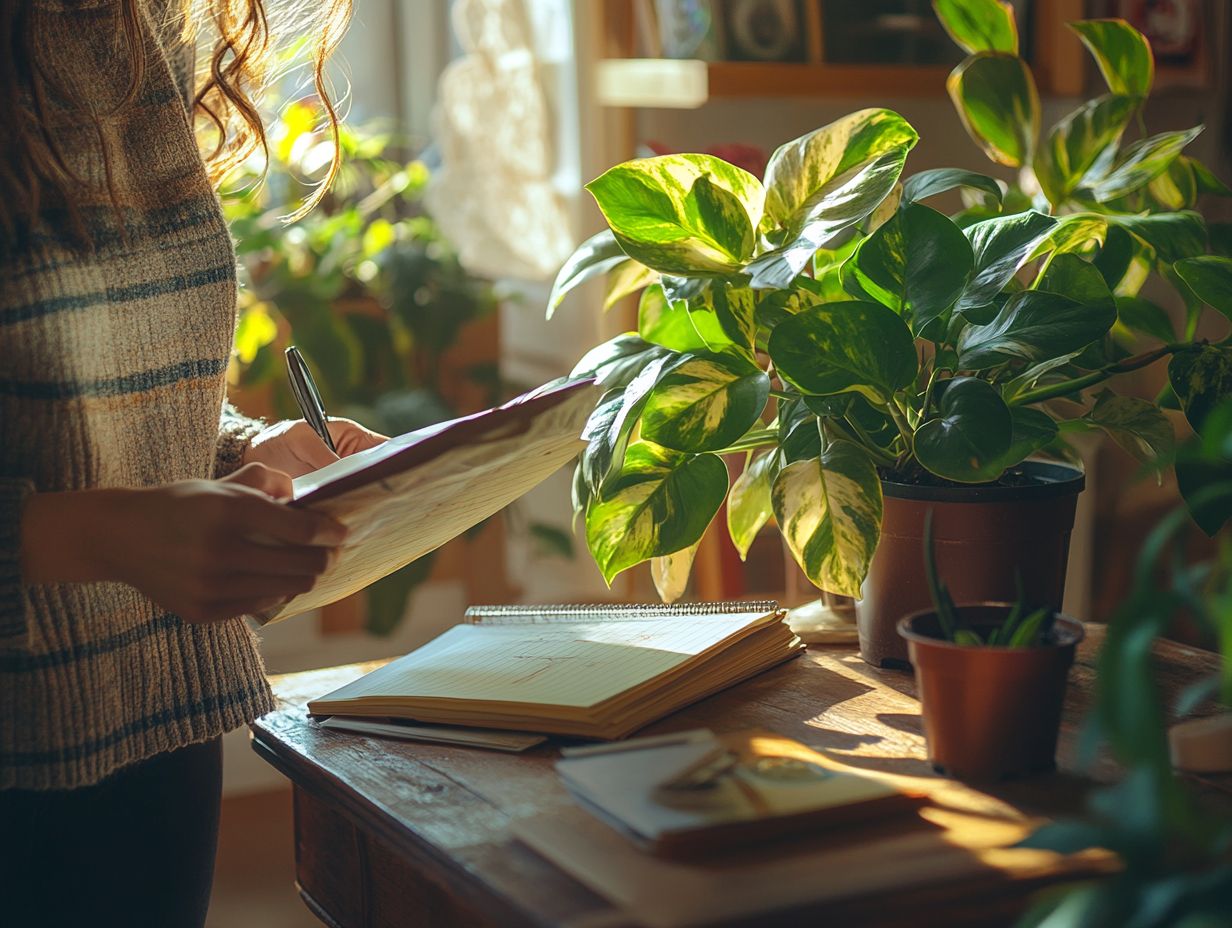
Overwatering and underwatering are two sides of the same coin, each posing significant risks to the health of your indoor plants. Overwatering can lead to roots that decay and fungal diseases. Conversely, underwatering results in parched leaves and stunted growth. Striking the right balance is essential for optimal plant health.
Recognizing the signs of these extremes is crucial for any plant enthusiast. Overwatered plants often display yellowing leaves, a mushy texture, and a foul odor from the soil, all indicators of root decay. On the other hand, underwatered plants might show crispy, browning leaf tips and may drop leaves entirely in an effort to conserve moisture.
To avoid these pitfalls, ensure your pots have proper drainage holes to allow excess water to escape, minimizing the risk of saturation. Keep a close eye on your soil moisture through simple finger tests or by using moisture meters. This can help you provide the right amount of hydration, keeping your plants stress-free and thriving.
Drainage Solutions
Implementing effective drainage solutions is crucial for the success of your indoor gardening endeavors. Proper drainage prevents water from accumulating in pots, which can lead to root rot and other undesirable conditions. By selecting the right soil and potting mix, along with suitable drainage aids, you can significantly enhance the health of your houseplants.
Choosing a well-draining soil mix is essential, as it allows excess moisture to escape while retaining just enough water for the roots. For example, a blend of potting soil mixed with perlite or vermiculite promotes aeration and improves drainage. Adding materials like sand or gravel at the bottom of your pots creates a layering effect, further aiding in moving water away from the roots.
Using pots with drainage holes is essential to prevent stagnant water. Exploring options like self-watering pots can also provide a balanced approach to moisture levels, perfectly catering to a variety of indoor plants.
Pest Infestations
Pests can be a gardener’s worst nightmare! Unwelcome guests like spider mites, fungus gnats, and mealybugs can wreak havoc on your cherished houseplants. That’s why effective pest control remedies are essential.
By identifying the early signs of pest problems and implementing effective control strategies, you can act now to protect your indoor plants from these harmful pests! This way, you can enhance their longevity and ensure they thrive in your care while learning to diagnose plant problems.
Common Pests and How to Treat Them
Common pests like aphids, spider mites, and mealybugs can wreak havoc on your indoor plants if you don’t act swiftly. Treatment options such as insecticidal soap and neem oil can effectively tackle these infestations and restore the vitality of your houseplants.
These tiny intruders often go unnoticed until they reveal their presence through yellowing leaves, stunted growth, or even sticky residue on your plant surfaces. You ll find aphids clustering on new growth, while spider mites leave behind fine webs, and mealybugs create those pesky white, cotton-like masses. By recognizing these signs, you can take immediate action.
Insecticidal soap works wonders by penetrating soft-bodied insects, suffocating them in no time, while neem oil disrupts their hormonal cycles, preventing reproduction. Regular monitoring and early intervention are key to saving your greenery from significant damage, ensuring your indoor plants thrive in their environment.
Light and Temperature Issues
Light and temperature are crucial elements that can profoundly influence the vitality of your indoor plants. Ensuring they receive ample sunlight and maintaining consistent temperature levels are key to preventing issues such as yellowing leaves and stunted growth.
By paying attention to these factors, you can create an environment where your houseplants truly flourish.
Finding the Right Balance
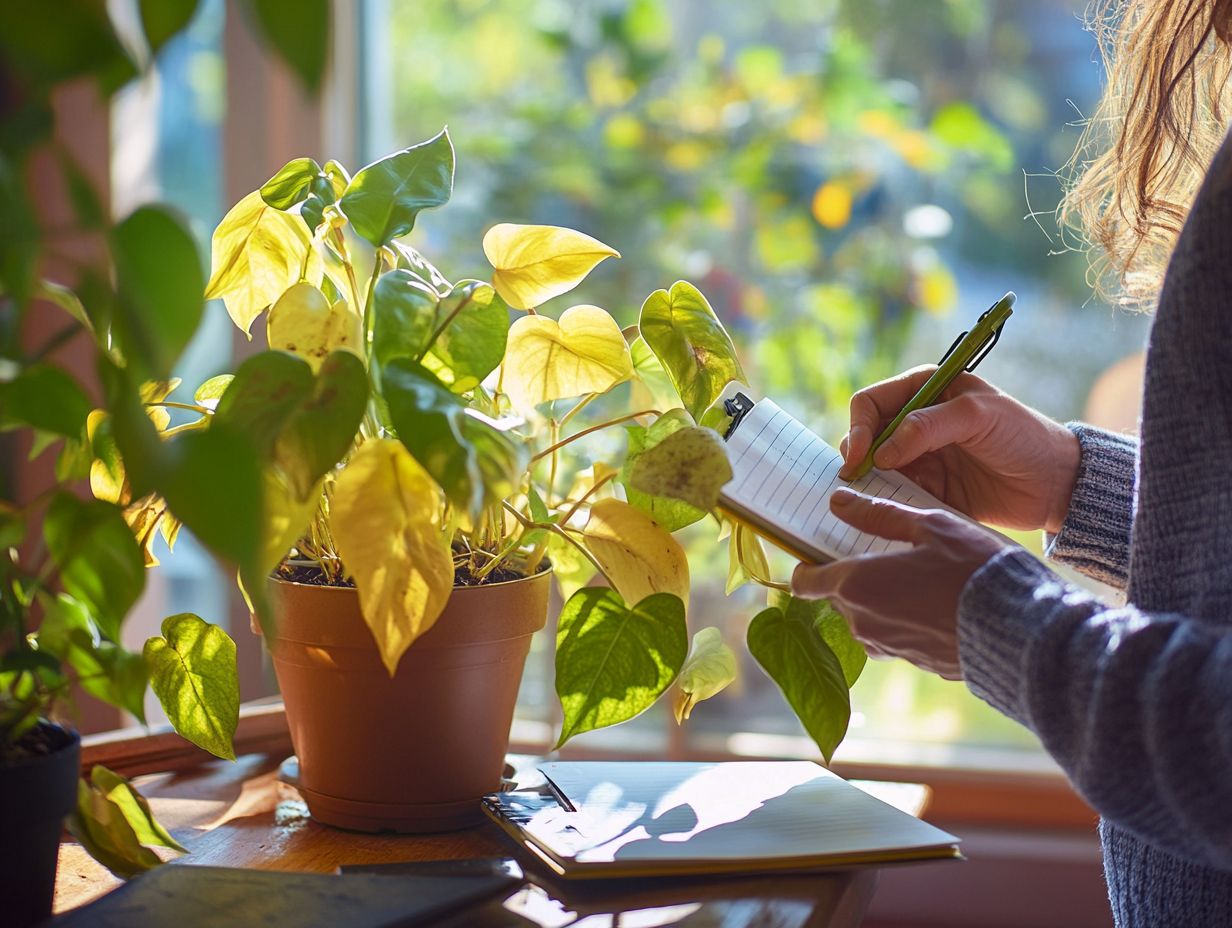
Finding the right balance of light exposure for your indoor plants is essential for healthy growth and avoiding common issues. Adequate light supports photosynthesis and helps regulate humidity levels. Therefore, it’s crucial to position your houseplants according to their specific light needs.
Consider factors like plant species, the natural light available in your space, and the time of year. For example, succulents thrive in bright, direct light, while ferns prefer more indirect conditions. Pay attention to how your plants react; if you notice leaves yellowing or stretching toward a light source, that s your cue to make adjustments.
Using sheer curtains or rotating your plants can help distribute light evenly throughout your indoor garden, ensuring all your greens receive the care they deserve.
Nutrient Deficiencies
Nutrient deficiencies can significantly affect your indoor plants’ growth and vitality, often showing symptoms like yellowing leaves and stunted growth. Understanding these deficiencies is vital for making necessary adjustments in fertilizers.
To tackle these deficiencies effectively, you need to know the important nutrients your houseplants require and how to supplement them with the right fertilizers. This knowledge empowers you to nurture your plants back to health and promote their flourishing.
Signs and Solutions
Recognizing the signs of nutrient deficiencies, such as yellowing leaf tips and stunted growth, is crucial for timely intervention. By implementing targeted solutions like appropriate fertilization and soil amendments, you can restore your plants’ health and enhance their overall growth.
Regularly inspecting their foliage and overall vigor helps you spot potential nutrient deficits before they escalate. For instance, brown spots might indicate a lack of potassium, while discoloration could suggest insufficient nitrogen.
Adjusting your care routine to include a balanced nutrient regimen and considering factors like light exposure and water quality can promote vitality significantly. Understanding the specific needs of each plant type will guide you in making the right amendment choices.
Creating an environment that prioritizes monitoring indoor plant health ensures not just their survival but also a flourishing appearance.
Frequently Asked Questions
What are some common issues that indoor plants face?
- Pests
- Inadequate lighting
- Over or under watering
- Nutrient deficiencies
How can I tell if my indoor plant is being affected by pests?
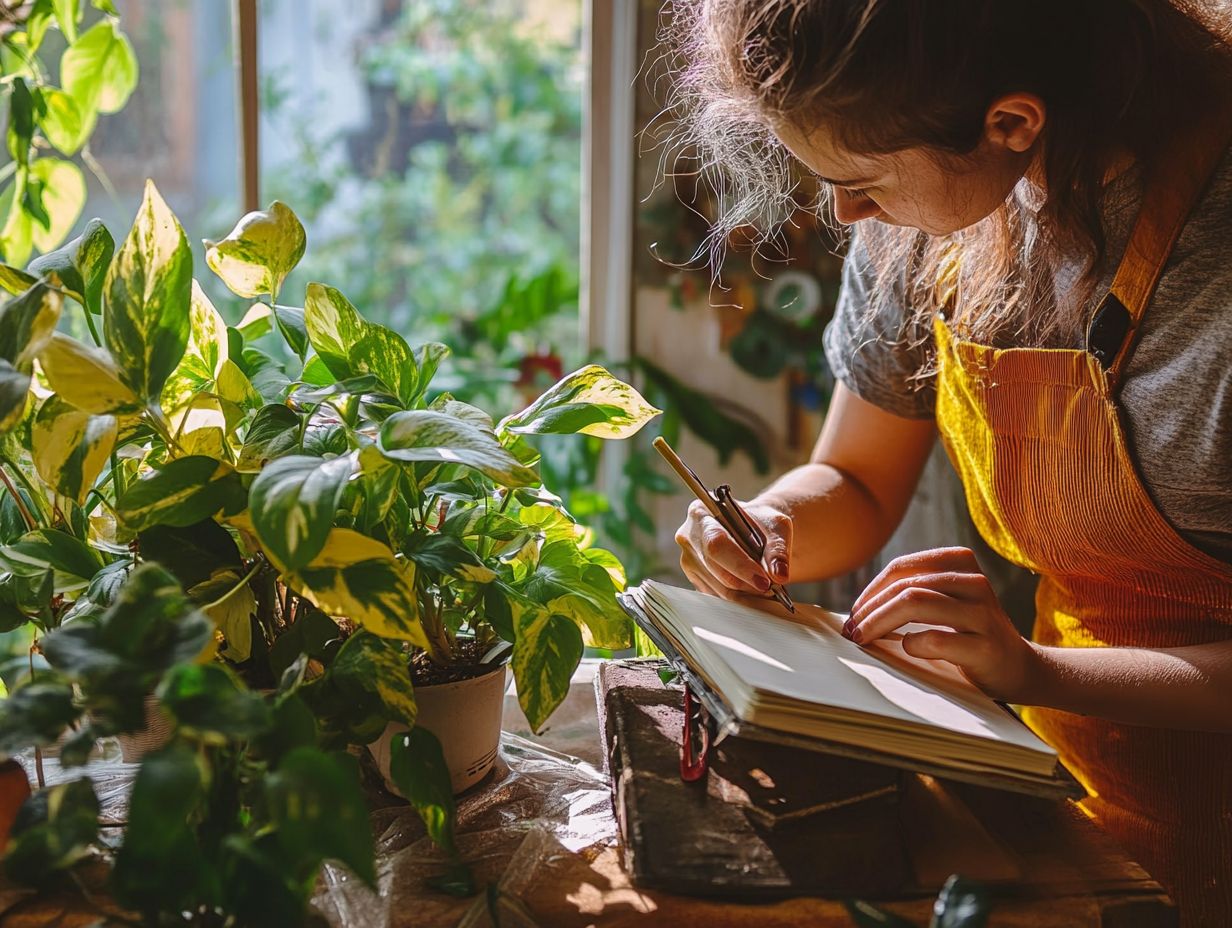
Common signs of a pest infestation include yellowing or wilting leaves, small holes in leaves, and the presence of webs or bugs on the plant.
Why are the leaves on my indoor plant turning yellow?
Yellowing leaves can indicate overwatering, nutrient deficiencies, or pests. Identifying the root cause is crucial for your plants’ survival!
How can I improve the lighting for my indoor plants?
If your plants are not receiving enough light, move them closer to a window or invest in artificial grow lights. For too much light, move them further from the window or provide shade.
What should I do if my indoor plant is wilting?
If your indoor plant is wilting, it may be under-watered or suffering from root rot. Check the soil moisture and adjust watering as needed. If the roots are rotting, repot the plant with fresh soil.
How often should I fertilize my indoor plants?
Fertilize indoor plants every 2-3 months during their active growing season using a balanced fertilizer designed for houseplants.
Do you have your own indoor plant care tips? Share them with us!

